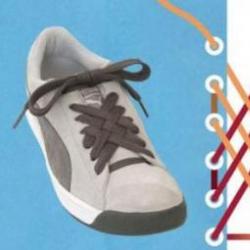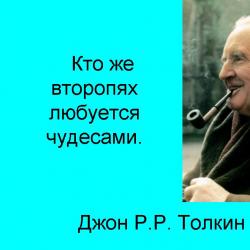Vintage clothing: women's retro fashion. Retro style in clothes
Retro style in clothing today is one of the most relevant and popular styles. It captivates with its grace, charm and charm of fashionistas from all over the world. And the most famous designers and couturiers never cease to draw inspiration from images of past years, creating delightful collections in a retro spirit.
What is retro style in clothing and what does it go with, or rather wear it with? Our fashion website will tell you about this today.
Please also take a look at our articles on style:
The word retro is translated from Latin as “facing into the past or backwards.” Simply put, retro clothes are clothes and images of past years. But here we must understand that we cannot endlessly turn our gaze back. For example, the clothes of the ancient Romans are no longer retro! For now, retro style means the time period from the 20s to the 70s of our century. True, some are already adding the 80s and 90s to the retro style.
To dress in retro style, you must follow the most important rule: do not mix different eras! It makes sense, a 20s style dress and 70s clogs would look silly when paired together.
Therefore, let's find out in a little more detail the distinctive features of each decade, so that if you wish, you can choose the time period that appeals to you most and dress elegantly and beautifully in retro style!
Outrageous 20s
In the 20s, every fashionista wanted to stand out, look as impressive and original as possible. In this decade, women preferred luxury and chic: a lot of pearls, a lot of fur, cigarettes with an elegant cigarette holder, legendary waves in their hair, feathers in their hair and cloche hats. The fashion of this time is sometimes called "Chicago style".

It was from the 20s that charming fishnet stockings, seductive feminine dresses with low waists and open backs, as well as stunning fringed dresses and, of course, boas came to us!

The 20s are the time when the corset finally went out of fashion. But thinness has become a trend: small breasts and narrow hips. In addition to Chicago-style dresses, a boyish, even tomboyish style was also in fashion: many fashionistas began to dress unisex and wear trousers.
The queen of fashion of the 20s, without a doubt, was Coco Chanel and her legendary black dress!

Today, the style of the 20s is very relevant not only for theme parties, but also in everyday life. Many designers add the charm of these years to their collections.


Graceful 30s
After the “skinny” 20s, the incredibly feminine and graceful 30s come to the delight of the male half of humanity. The Chicago style is still in fashion, but boyish looks have been replaced by elegant dresses made of flowing fabrics that highlight the beautiful curves of the female body.

Style icons include the charming Katharine Hepburn, the elegant Marlene Dietrich, the unsurpassed Greta Garbo and the beautiful Vivier Leigh. Therefore, fashion includes fur, long gloves, hats and all kinds of draperies, which fashionistas copied, looking at their favorite actresses.

Today, the style of the 30s is reflected in evening dresses. The most popular movie divas of our time often appear on the red carpet in luxurious outfits in the spirit of the 30s.

Minimalist 40s
The beginning of the 40s promised bright prospects in the fashion world: feminine full skirts, playful puffed sleeves and beautiful blouses with charming bows. But, unfortunately, wartime made its own adjustments. The outfits became as simple and monotonous as possible, naturally without any glitz or chic. Women made the look more festive by adding white collars and drawing arrows on their legs, imitating scarce tights.

After the end of the war, women sought to look as festive and beautiful as possible, as meager funds allowed. It was at this time that many famous designers showed the height of their skill, inventing simple, but elegant and feminine dresses.

The legendary Christian Dior laid the foundation for the fashion of the 50s in the late 40s, offering a stunning dress style with narrow shoulders, a thin waist and a beautiful flared skirt. And of course the famous pencil skirt, the best creation of the master, which has become the standard of style and beauty!

The modern interpretation of the images of the 40s looks very touching and beautiful.

Romantic 50s
Women who suffered during wartime want to love and live beautifully again! Therefore, the new look style, the basis of which was proposed by Christian Dior in the late 40s, is becoming the most relevant. brighter colors, bolder prints and ruffles. During this period, elegant stiletto heels are included in the wardrobe of every fashionista. It is the style of the 50s that is considered the most romantic and feminine.


The 50s also became the founders of the catchy pin-up style: cropped high-waisted trousers, short tops, flirty skirts, perky checks, headscarves and bright colors.

The style legend of this period is the incomparable Marilyn Monroe!

Today, many modern fashionistas love to copy the style of the 50s, creating bright and spectacular looks!

Epochal 60s
Revolution in the world of fashion! Only the outrageous 20s can compare with the popularity of the 60s. Today, many designers and fashionistas from all over the world are copying the style of the rebellious 60s: the time of the birth of daring miniskirts, the popularization of jeans and unisex clothing.



Seductive arrows, voluminous hairstyles with a backcomb, A-line dresses, geometric prints, short pleated skirts and skinny knee-high boots are still part of the wardrobe of fashionistas from all over the world!

Style legends are the charming Twiggy and the incredibly elegant Jacqueline Kennedy.

Bold 70s
Many designers consider the 70s to be a time of bad taste, when the hippie style emerged, rejecting all existing rules and canons of fashion.

 Twiggy on the cover of Vogue
Twiggy on the cover of Vogue But with all this, it is the free and independent hippie style that most often provides inspiration for designers of our time.
 Alberta Ferretti, Emilio Pucci, Blugirl
Alberta Ferretti, Emilio Pucci, Blugirl The disco style also emerged in the 70s: flared jeans and bell-bottoms were especially popular. Shirt dresses, overalls and blouses with bright patterns are in fashion. And, of course, crazy platform shoes and crazy afro hairstyles!


These days there is a real BOOM of the 70s. True, this is not a complete copy of the style, but rather its modern interpretation. But nevertheless, one cannot help but note such a craze for the images of these particular years.

80s and 90s
Fashion includes sports and everything connected with it. Aerobics is taking over the world! Girls wearing bright leggings and T-shirts are increasingly appearing on the streets. At this time, women's heads are decorated with stunning bouffants, revealing outfits with large jewelry and flashy makeup are becoming increasingly popular. The trend is glamorous shiny fabrics and jackets with wide shoulders. At this time, rock style begins to gain momentum: a leather biker jacket, metal studs and ripped jeans become the hit of the era!



Today, the style of these years is more used for themed parties. But certain elements of style are increasingly being copied by young girls into their everyday looks.

As we said above, if you want to dress in a retro style, you must stick to plus/minus one era. At the same time, it is desirable that your entire image as a whole be consistent in this style: hairstyle, makeup and accessories should correspond to the chosen time.
But let’s make a reservation right away. Today it is allowed to mix retro style with modern clothing elements. And also, on the contrary, adding individual retro-style details to a modern look. The main thing is to do everything in moderation!
For example, you can wear a dress in a retro style, the same 20s or 50s, but at the same time take a modern clutch and wear fashionable elegant sandals. Of course, such an image will not be considered a full-fledged look in retro style, but no one will call you a girl with bad taste.


















Fashionable images in retro style. Photo
For inspiration and just as examples, we have selected for you photos of modern fashionable and beautiful images in retro style.
























The great Coco Chanel once said that time passes, but style remains. This remaining (or inherited) style, which bears the imprint of its time, is called retro style in clothing. The very meaning of the word “retro” translated from Latin means “back”. Thus, this style can be compared to a time machine, which takes you back a certain number of years into the past and helps you experience its taste. Precisely for a specific and not very distant one, because the clothes of the ancient Romans, for example, or the times of Catherine II, do not fit the concept of “retro”.
What does the idea of retro style mean?
It is almost impossible to accurately determine the starting point of retro fashion, because this is not a specific date of any historical event. Many fashion designers and art historians are inclined to believe that fashion from the beginning to the seventies of the 20th century belongs to it. Older things are considered antiques. By the way, things created from 20 to 50 years ago are also classified as vintage.
The time line between retro and vintage clothing styles is largely blurred. Moreover, in our time, a narrow division into specific styles of clothing in general is becoming quite arbitrary, since the so-called diffuse style has arisen, when a set of clothes is put together from things of different styles, sometimes very bizarre, but interesting precisely because of these unexpected and daring combinations.

The main difference between retro and vintage is not this. A “retro thing” is clothing that can be easily reproduced today, and modern fabrics and colors are used to sew it.
It is distinguished only by the cut, details and accessories characteristic of a certain time.
The word “vintage” is a winemaking term and translated into Russian means aging of wine. Thus, vintage clothing is likened to fine, aged wine. A beautiful comparison, isn't it? In the 90s of the last century, old clothes from the most famous designers - Chanel, Dior, Yves Saint Laurent and others - began to be called vintage. That is, vintage is a work of art in its own way, an original, not a copy, representing a certain style of a famous fashion designer, which has not undergone any innovation and is well preserved to this day.
How to distinguish a vintage item from an ordinary one?

To see the difference between a vintage item and an ordinary one, just compare the sewing technique and their finishing. Vintage clothing style has its own bright personality, because these things at one time were what was called “the latest in fashion” in the best sense. It should be noted that vintage and retro complement each other; we can say that they are friends and have a certain relationship.
The clothes of past years reflect the spirit of their time, so they are especially liked by those people who want to try it on themselves. The activity is exciting because time weeds out fashionable trash and leaves the best.
Popular retro styles of our time
20s. One of the most current, elegant and timeless retro clothing styles for women is the fashion of the twenties Exactly
it inspires designers and fashion designers to create the latest collections of evening dresses - rectangular shape, low waist, mysterious shine of satin, neckline that reveals the back, bare arms, graceful and rich embellishments, hand-finished - all this creates modern silhouettes and wonderful images inspired by the theme time.

These years were marked by the sign of women's emancipation and freedom - it was then that revolutionary sleeveless and knee-length dresses at that time became fashionable. A revolution also occurred in the fashion for underwear: women decisively parted with the tormentor of the corset and replaced it with a comfortable bra that appeared in the mid-twenties. So, in essence, it also belongs to the retro style.
The post-war and fifties years gave women full skirts that slightly covered the knee, narrow sleeves, transparent and translucent blouses, patent leather straps that emphasized slimness, small handbags, elbow-length gloves, and cute, flirty long-brimmed hats. Light dresses made of fabrics with polka dots, checks and floral patterns can just as easily turn the head of a guy who is staring at a girl. A modern girl dressed in the style of the 50s attracts admiring glances.

60s
The sixties were a sign of freedom and sexuality. Flirty Bermuda and capri pants, mysterious sunglasses, light scarves thrown over unimaginable combed hairstyles, godet skirts, expressive headbands, and shirt dresses looked great on young dandies then, and they still look great today.
70s
The Seventies - emancipated women wore trouser suits, Yves Saint Laurent created women's jackets with incredibly huge shoulders, the daring Mary Quant miniskirt and patterned tights. A colorful and entertaining kaleidoscope: embroidered jeans, T-shirts, T-shirts, turtlenecks, brooding hippie style with long dresses made of natural fabrics, jackets with epaulettes, shiny metallic dresses, vests with studs and zippers, platform shoes, fabrics - silk, crepe de Chine, velvet, crepe de Chine, at the same time and in parallel - the then fashionable crimplene, nylon, nylon.

Retro style for men
Retro style for men includes interesting, catchy clothes and quite solid ones, which are perceived as classics. The first men's fashion was borrowed from the most popular singers of the century - the Beatles, Elvis Presley and others. Turtlenecks, tweed jackets, velvet trousers and blazers, shiny lurex shirts, a chic white jacket with a black shirt from the 60s and 70s look attractive and even intriguing. Perhaps retro would not have been so popular among men if it were not for cinema.

One of the most interesting styles in men's clothing is called "godfather" after the title of the film of the same name, which appeared on screens in 1972. Double-breasted jackets, two-tone shoes, colored shirts under the jacket, suspenders, felt hats with soft brims, scarves tucked into shirts, three-piece suits, vests, strict men's hairstyles - all this is a men's retro style, to which the only synonym can be applied - elegant. Of course, to a large extent, the retro fashion introduced by cinema depends on the popularity of the actors. Marlene Brando and Al Pacino contributed greatly to the charm of retro style for men.
A-list movie stars Marilyn Monroe, Audrey Hepburn, Brigitte Bardot, Sophia Loren will never fade away, because they have become style icons of all times. It is also possible that retro will be perceived as casual and boring clothing. It fits perfectly into any modern style and looks great. It’s no wonder that retro looks are worn by Dita Von Teese, Madonna, Gwen Stefani, Rihanna and even Barack Obama’s wife Michelle. After all, this is a win-win option to attract attention and demonstrate a subtle sense of style.
Tweet
Cool
One of the enduring trends of recent years is retro. It competes with normocore, neo-grunge, boho-chic and other loose-fitting, but rather cruel and stingy styles when it comes to manifestations of femininity.


And even constructivism, with its color blocks and unnatural silhouettes, strives to distort the female figure, move the waist to an incomprehensible place, fragment and destroy the silhouette as much as possible.

And although these styles are also often “well forgotten old”, for example, grunge of the 90s, hippies of the 70s, pop art of the 60s with their “space” and futurism of the 20s, there is also other retro.
Against the backdrop of this war with femininity, retro is the flagship of the fight for female sex appeal (and the waist where it is needed). We are talking mainly about the retro 50s, post-war years, when Dior and Balenciaga asked the question, where, in fact, are the Real Women?
Dior at 50 - early 60s:



Dior is nostalgic, 2012:




Against the backdrop of the retro craze and demand for vintage, an army of sellers of vintage items appears on the Internet. Jewelry, outerwear, shoes, dresses and shirts, jeans... All this can either be ordered at auction or special. website abroad, or personally go to the largest flea markets in Europe, or... take a closer look at the assortment of flea markets in your city. It is possible that someone is selling things that were inherited and have been lying on the mezzanine “since my grandfather’s business trip abroad, who brought it for his grandmother.”
If your grandfathers did not go anywhere, you can visit one of the largest markets in Europe to visit “their grandfathers”.

Retro differs from vintage in that it is a broader concept.
Retro in the broadest sense is a whole era, including clothes, cars, interiors, household items, and culture.
Vintage- these are clothes from the 1920s to the 1980s, but (!) created within the framework of “haute couture” collections, or from brands “with history”, or by talented tailors, ind. tailoring. These things must reflect the spirit of the era and be of “cultural value.”

Retro in terms of clothing- this is everything else that is of no value for the history of fashion: things sewn in unknown ateliers and “mass markets”, things that are replicas of famous retro outfits, things that are sewn “under the influence of retro” now. Most often, “retro” refers to clothing from the 1960s - 1990s.

Everything that was in clothing before 1920 is already antiques(and although collectors here also have their own selection criteria, these things have more historical value and, as a rule, are not worn by anyone, except in exceptional cases, for example, in the movies).


Once again: vintage, retro, modern interpretation of LV: 


Basic rules for creating a retro look using vintage in your wardrobe
1. It should be a characteristic thing that at first glance speaks of when it was at the height of fashion. 
2. These are not basic things. Unless, of course, you are a fashion blogger who is interested in similar topics. If you overdo it, you risk looking like a carnival party character or a time traveler.

3. And most importantly, wear the retro look that suits your appearance type. If everyone around you is fond of the 60s and wears “Dior looks”, and you have a figure ideal for the 80s, with their wide shoulders and tall height, then when choosing a retro look, it is better to focus on what suits you. Don't worry that it's unfashionable - in recent years, designers have periodically quoted this or that decade, even banana trousers and wide disco-style shoulders are popular. 
4. It is better to compose the image according to the principle: the base is basic classics (or your personal “basic wardrobe”), to the base – one or two retro things (for example, a bag and jewelry, or a skirt, hairstyle and earrings), and definitely one two ultra-modern things (usually either shoes or, again, a hairstyle, although there could be a necklace and a sweatshirt).

5. Why do we need newfangled things? Often, the wrong shoes and “head” can simply ruin the whole effect (not to mention that outdated shoes and an unfashionable haircut are the last things a woman could wish for, and you can’t pass it off as “retro”). 
6. Don't forget about makeup typical for a given era. True, it is better to “modernize” it, for example, leave the peacock shadows in the 80s, and apply a bright mono color to the eyes in the spirit of the latest fashion shows.

The question arises - to use genuine retro or replicas from past eras, which are now full of new collections. In terms of price-quality ratio, the chances of finding “your” vintage at a flea market at a cheap price are much greater than buying a new item of the same quality (unless someone gives you “haute couture” items as a gift). After all, as you know, the democratic “Mango”, “Zara” or “XM” were inaccessible to our grandmothers, and, therefore, clothes were sewn conscientiously, to last. On the other hand, if you don’t rely on chance and “hunt” at flea markets, buying vintage on specialized sites is often close to the cost of branded luxury clothing. And although you are unlikely to buy 19th-century corsets, dresses from famous brands only become more expensive over the years, and professional resellers will not miss their chance to make money. This business is akin to selling antiques.
Gucci, 2014, 70s and 60s:

Louis Vuitton, 2014

How to find “your” era?
You can collect several photos of yourself in different looks (or simply with different hairstyles and clothing styles), look at them carefully (or ask someone) and compare them with female images that were popular in different decades.
Do you have feminine, soft features and a waist? Fifties and new looks will help you look like the American Dream. And Louis Vuitton or the more democratic Zara will help with a floral skirt or dress “in style”. You can complement the look with either a high babette bun, a short haircut in the style of Audrey, or complex styling - depending on the situation. Again, you can wear both ballet flats and Converse; you can “spot” suitable looks from Gwen Stefani and Katy Perry.

Or maybe you are small and fragile, with delicate features? Then you are the ideal “femme fatale” of the 20s, you can review “Some Like It Hot”, or follow the example of Akhmatova and Tsvetaeva. I especially recommend reading “The Demonic Woman” by Teffi.

And watch "The Great Gatsby"


However, don’t get carried away: to avoid the “Ellochka the cannibal” look, dilute the look with modern stiletto heels or the constructivism of Isabel Marrant ankle boots.
In general, create, try, get inspired.
Fashion is a fickle lady. However, if some clothing options are “passable,” then there are those that will forever go down in fashion history. The former are at the peak of popularity for a short time, but the latter become classics, to which fashion returns from time to time.
What is retro style?
Retro-style clothing are models that were fashionable in the last century from the 20s to the 90s. True, not all decades of the last century left a noticeable mark on the history of fashion. The most popular models are dresses in the style of the 20s, 50s and 60s.

Retro style is very popular among adult fashionistas. But children's fashion does not ignore it, so a dress for a girl in a retro style should definitely appear in your daughter's wardrobe. This outfit would be appropriate for a matinee, a family celebration or any other event. Looking at photos of models of children's dresses, you can always choose an option that is ideal for your girl.
Charleston style
A simple and uncomplicated dress in the style of the 20s is shaped like a rectangle. It is characterized by a low waistline, a straight bodice without darts or excessive decoration, and a skirt consisting of several flounces. The dress can reach to the knees or have an asymmetrical skirt with an extension on one side.

This dress looks less pretentious than dresses with full skirts, but girls aged 8-10 years will look great in it. Sew a similar dress from any fabric that drapes well, fabrics with shine are welcome. Rhinestones, fringe, velvet, and feathers are used for decoration.
What to wear with?

To make the retro look authentic, you need to choose the right accessories to go with it. In winter, the outfit can be complemented with a fur cape and long gloves. In summer, you should use a silk scarf or feather boa. You can put a long string of pearls on the girl. An interesting detail of the look will be a pillbox hat with a veil or artificial flowers.
Hairstyle

A Charleston style dress requires a matching hairstyle. In the 20s, wave hairstyles were very popular. You can create this wave hairstyle for your daughter yourself using styling products and hair clips. Long hair should be tied up in a messy bun or curled.
New look style
The middle of the last century went down in fashion history as the triumph of feminine models. Fitted dresses with full skirts are in fashion. It is in this style that the most popular retro dresses for girls today are presented. They are sewn from bright fabrics, often using a polka dot print or a floral pattern. This style in our country is often called the “Hipster” style, since these are the dresses that were popular during the period of the spread of this subculture.

Main features of this dress:
- fitted bodice;
- There may be no sleeves, but puffed sleeves look cute on children's dresses;
- sun cut skirt;
- a lush, multi-layered petticoat made of tulle or organza. Moreover, the petticoat can be of a contrasting color.
What to wear with?
A dress in the “new look” style does not require a large number of accessories, as it is bright in itself. Almost the only decoration is a wide belt in a contrasting color; it can be tied with a lush bow on the back or decorated with an artificial flower.

You can wear short, bright beads around the girl’s neck. An interesting detail will be the short openwork gloves.
Hairstyles
To create the look, you can do a high ponytail or a babette style. Satin ribbons and hoops are used to decorate the hairstyle.

"Trapezoid" from the 60s
Less popular, but no less interesting, are retro dresses for children in the shape of a trapezoid. This style appeared in the sixties, it is distinguished by a loose silhouette, extremely laconic cut and a length well above the knees. If a model with a sleeve is used, then this part is also cut out in the shape of a trapezoid.

Despite such a simple cut, this style can also be worn in elegant children's dresses. You just need to choose the right fabric, such as velvet or jacquard. Dresses made of guipure on a cover look interesting. Dresses typically have contrasting trim running along the hem, sleeve hem, and front closure line. A dress made from fabric with a metallic effect looks elegant, or you can choose an outfit in a bright acid shade.
What to wear with?

The laconic cut of the dress requires laconic accessories. You can choose plastic jewelry for your dress - beads or bracelets.
Hairstyle

In the sixties, most girls curled their hair with curlers or had chemistry done. Of course, a child should not get a perm. You can make your hairstyle much simpler: braid your daughter’s hair in several thin braids at night. In the morning, carefully undo your braids and your hairstyle is ready. The hair can be pulled back into a ponytail or pinned up at the temples.
It’s not for nothing that they say that everything new is well forgotten old, so retro style in clothes takes on modern features and fits well into modern girls’ ensembles. We will tell you in this article what features distinguish retro at different times and what the latest trends are.
Knowing the features characteristic of each era, you can easily create a set in the same style.
Beginning of the twentieth century. The situation in the world is relatively calm, and therefore ladies still wear corsets, tightening them to the limit in order to get closer to the ideal of that time - a girl with a wasp waist. Hats decorated with feathers, fluffy skirts and hairstyles with wavy hair are in fashion, the neckline is open, and legs are always covered.
- 20-30s of the twentieth century. The feminist movement is actively developing; women, along with men, are active in the workplace, dressing in men's clothing. Corsets brought inconvenience, so they were taken out of fashion, fluffy long skirts were shortened and narrowed, and hair was cut short. Light, airy, loose-fitting dresses, voluminous jewelry, tall feathers on hats, stockings, and fringed hairstyles are becoming popular. Working ladies wore closed men's shirts with a tie and trouser suits, men's jackets and masculine shoes. The color palette is “dry” and is represented by black, white and pale pink outfits, but it looks quite stylish in combination with bright red lipstick, which previously only ladies of indecent behavior could afford. Ladies wear knitted hats on their heads, elegant pumps on their feet, dresses that emphasize the silhouette and female figure, stockings with arrows, boas and boas made of natural fur are welcome.
- 40-50s of the twentieth century. The beginning of the Second World War made the ladies' outfits more modest, with simple clothes in dark colors. Military and minimalism are in fashion, the absence of bright makeup and unnecessary details. Shirts are buttoned all the way, skirts are no higher or lower than the knee, jackets have a masculine cut, and turtlenecks and double-collar sweaters are gaining popularity. In the post-war period, women's fashion gradually begins to “come to life”, which owes much to the sexy Marilyn Monroe and the legendary Audrey Helburn. Wide high-waisted skirts, an open neckline, long gloves, guipure and fur hangers, tiny velvet handbags emphasize the beauty and fragility of female nature. Tapered sleeves and fitted dresses highlight the vintage appeal of the beauties' lines and are a huge hit among men.
- 60-70s of the twentieth century. The post-war depression is over, and flashy colors are coming back into fashion - bright red dresses with white polka dots, bright lipstick and catchy makeup, geometric, abstract and floral prints. The bold mini length, high-heeled shoes and provocative wooden platform evoke delight. Bohemian looks are in fashion - chic dresses with open shoulders and fur coats, bright colored scarves on the head in tandem with large sunglasses, bold colors. The hippie style with its inherent features is becoming in demand: ripped jeans, headbands, shirts and tunics with ethnic melodies, ballet shoes, flowing dresses. Large bows, blouses with sparkles and sequins, leather jackets with fringes, flared and wide trousers, bell dresses, men's plaid shirts and natural fabrics are typical of the 70s era. The length of the dresses is mini and maxi, the decorations are voluminous and made from natural materials. The era of the 70s caused a real explosion in fashion, offering a variety of style solutions for the ladies of those times.

Knowledge of the features of this genre will help you create a retro-style wardrobe for a modern lady.
- Crisp, fitted silhouettes, demonstrating the evenness of the lines of the female figure. Please note that the retro style emphasizes the charms of the figure, not its flaws, so be careful when correcting problem areas with clothing.
- Lightweight, floating fabrics, such as chiffon, fine knitwear, silk or wool.
- Subtle pastels or loud bright colors and romantic prints- polka dot or flower. In modern retro style, geometric patterns and patterns should be avoided, as well as dark colors typical of classical or business styles.
- Finishing things. Particular attention is paid to details that emphasize the femininity of the image: ruffles, bows, satin ribbons and inserts, lace and velvet frills.

Designers took the best of retro and embodied their ideas in catwalk outfits and clothing collections. Summarizing their bold decisions, we can draw a conclusion about what modern retro-style things should be like.
- Dress. The length is just below the knee, the silhouette is fitted or semi-fitted, the hem has a wide part. A belt is necessary to focus attention on a woman's slender waist.
- Blouse. It has an original trim in the form of a stand-up collar, a frill collar or a large bow. Retro style also involves trimming the blouse with ruffles or lace.
- Skirt. A pencil skirt is indispensable, suitable for ladies with any body type and proportions. “Pencil” will allow you to hide flaws and highlight your advantages. The waist of this skirt is slightly high.
- Outerwear. The best option is a trapezoidal coat. The preferred length is slightly below the knee. When choosing the color of outerwear, no one limits you - unobtrusive gray or original bright colors, for example, crimson, will go perfectly with a wide-brimmed hat or beret.
- Shoes. Heels are preferred, but shoes or boots with a wide platform are also appropriate. A sure-fire option is pumps, which will be a chic addition to any outfit.
- Accessories. The stakes are on femininity. Skilfully use clutches, silk gloves, tiny handbags, wide belts or narrow belts, brooches, hair hoops and huge butterfly glasses in your looks.

We can conclude that the retro style of clothing is quite universal and will fit perfectly into modern looks. If you don’t have time to put together “antique” ensembles, you can simply spend time shopping and buy style selections presented by fashion designers.







